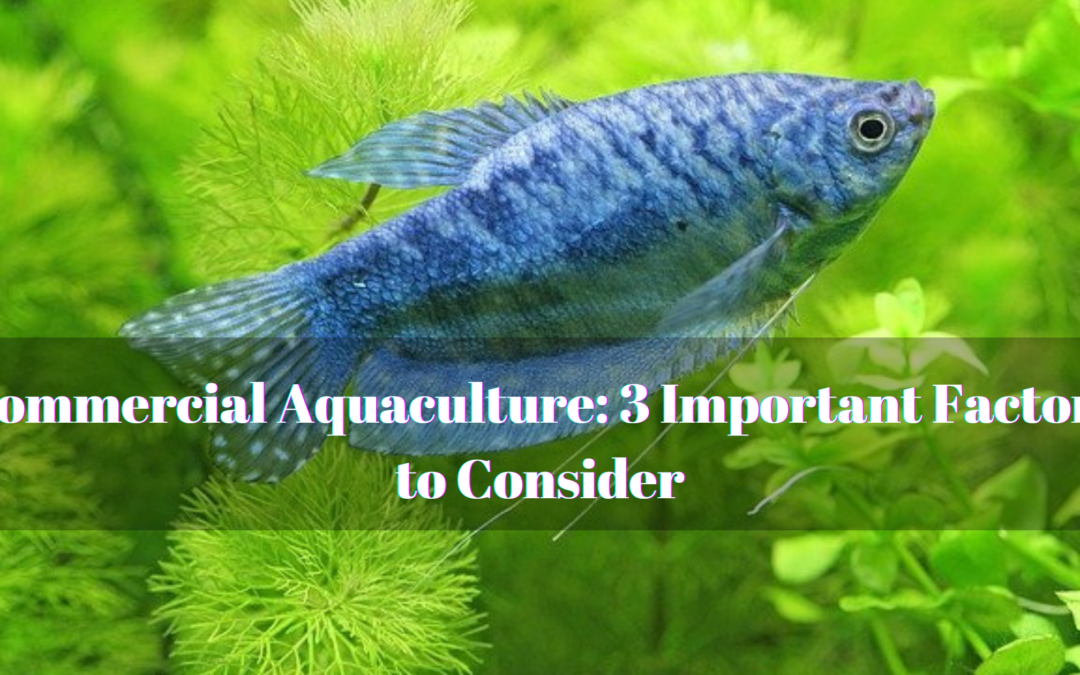Aquaculture refers to fish farming that’s undertaken with the aim of maximizing profits. According to FAO, the global fish trade is estimated currently at US$56 which far surpasses most of the traditional agricultural exports. Economists at International Food Policy Research Institute (IFPRI) and World Fish Research Centre estimated that the total world production of fish was likely to increase by over 40 percent in the year 2020. It’s therefore quite clear that the economic impact of commercial fish farming is very significant.
Large commercial aquaculture farms are more likely to provide employment, business profits to the fish farmers, taxes to the government, and improved investment into the industry. Commercial aquaculture is well capable of stimulating economic growth as over 35 million people are directly employed in the fisheries sector world over with 20 percent of them being in the aquaculture sector. Indirectly, the industry supports quite a higher number than what’s indicated.
Here are some of the factors to consider when venturing into commercial aquaculture;
Planning Stage
Before getting started with commercial aquaculture, extensive planning should be undertaken before making any large capital investment. The planning phase entails a detailed evaluation of the economic, biological, and legal feasibility of raising a specific species of fish. The economic and biological considerations are quite important and it’s important to remember that legal constraints can limit the practice of commercial aquaculture in certain areas.

The planning phase should include the following;
Economic feasibility analysis
Commercial aquaculture is considered to be economically feasible if the fish product can be produced at a cost that’s competitive with other sources and still be reasonably profitable. Economic considerations should therefore be undertaken based on three categories; demand, production, and marketing. Product demand should be considered based on the amount that consumers are willing to purchase, the selling price, the price of the competing products, the income and size of the consuming population.
The fish products that are likely to command high prices just like luxury food items are normally characterized by short supply. Increased production would therefore result in reduced product revenues. Other fish products that command lower prices should compete with meat products.
Marketing
Marketing entails the movement of the fish products from the producers to the consumers. Marketing can be such a significant challenge to aquaculture farmers. It’s therefore advisable that the farmers get to work with an established marketing network that can easily adapt to a new aquaculture product.
In order to establish a market network for the fish products, there should be a continuous year-round supply of marketable fish. Until such can be assured a processor may be hesitant to invest in the conversion of existing equipment to be used for handling the new products.
Biological Feasibility
Water supply is a key factor when determining site selection for an aquaculture facility. A desirable water supply should have the following characteristics;
- Relatively constant flow
- Water temperatures should be constant or acceptable
- Lower levels of harmful gases
- Lower levels of siltation
- Limited possibilities of wild fishes and disease introduction
- No organic pollution sources or chemical
Any potential water source should therefore be adequately tested for both quality and quantity before cost analysis for the facilities is made. Get more insight on commercial aquaculture by joining a team of expert farmers with diverse insight on better ways of engaging in commercial fish farming.
P.S: – Working with experts and a team of aquaculture farmers can really help you to gain knowledge in all areas of aquaculture. Join our EAT FREE Community for more online learning opportunities!
Related Articles and Resources:
- Catfish Farming – How to Increase Your Profit
- Commercial Shrimp Aquaculture: Why Technical Training is Important
- Shrimp Aquaculture: How to Increase Production and the Future



